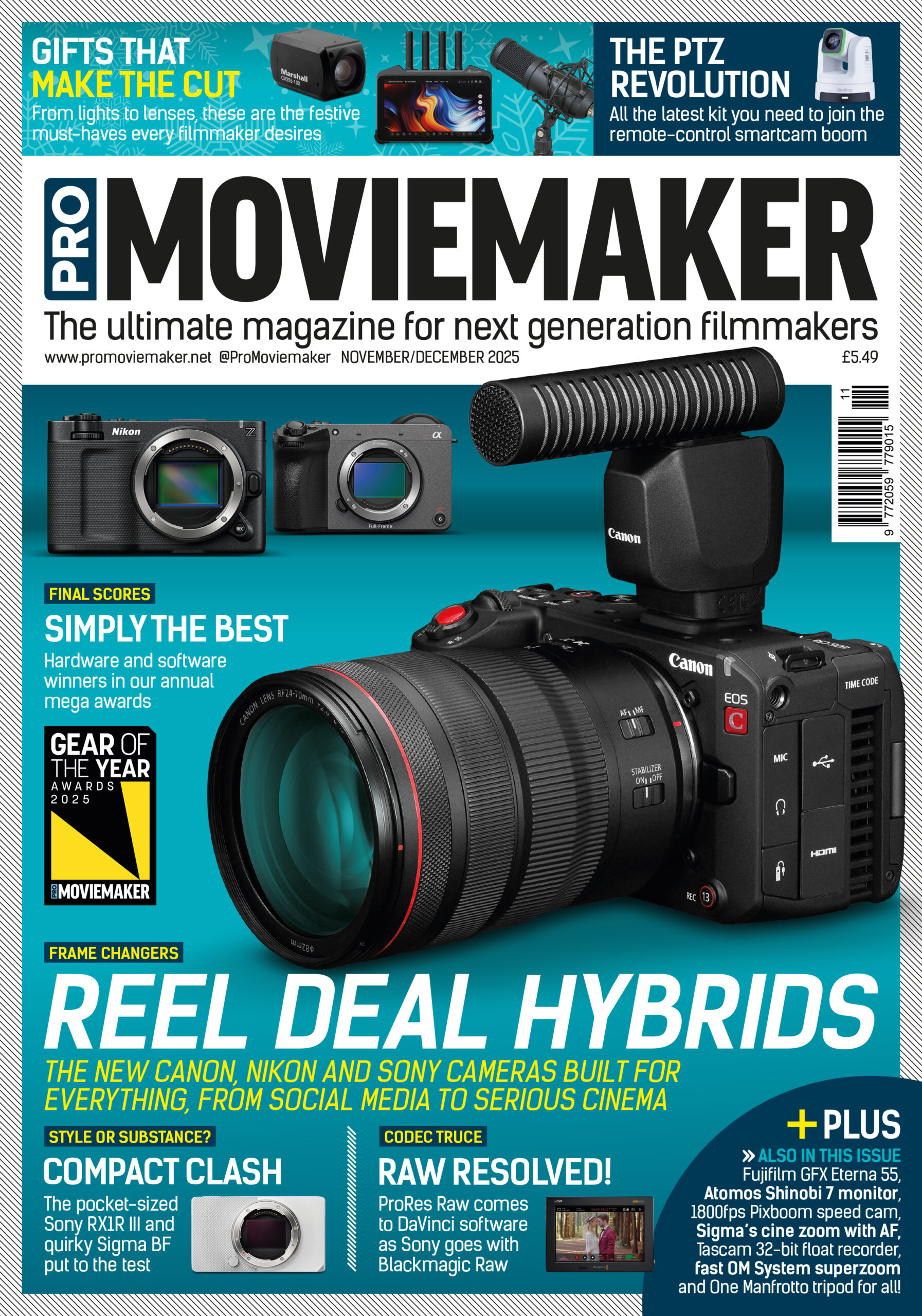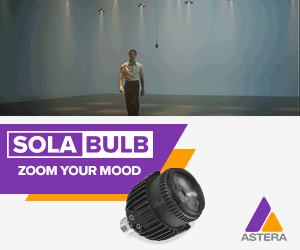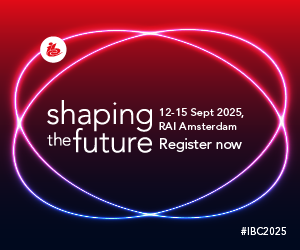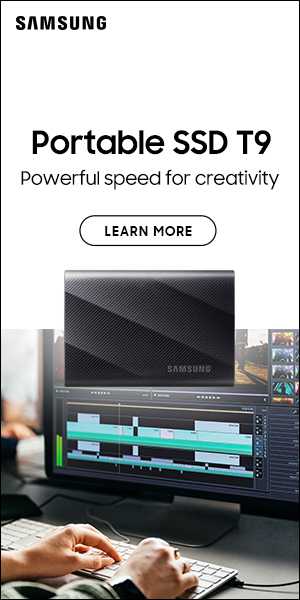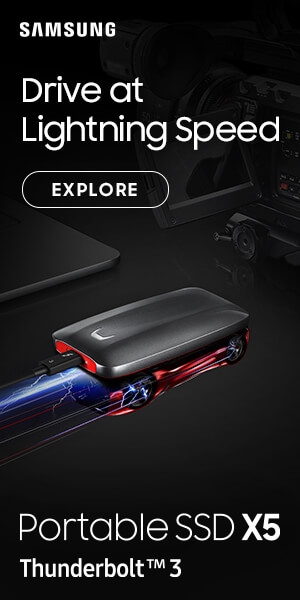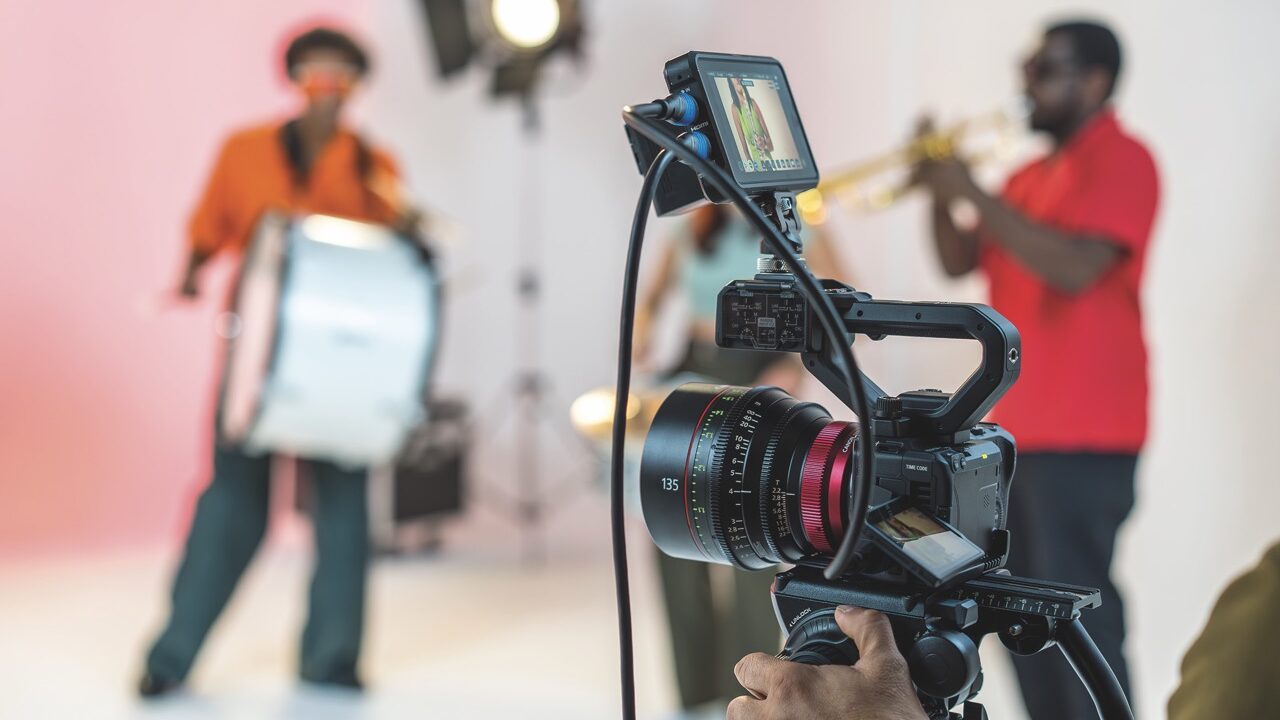
Hands-on with the EOS C50
Posted on Oct 28, 2025 by Pro Moviemaker
After a quick demo at IBC, we put Canon’s tiny EOS C50 to the test in London to see if it delivers big performance
There is only so much you can tell about a camera after just a few minutes trying it out at a major show like IBC. But luckily, in the case of Canon, a few days later there was a far longer try-out session at a studio space in London. Along with the tech support team, we got to try the camera in a variety of set-ups.
From AF with the latest RF-fit hybrid glass to full Canon cine primes, there was a lot to play with. There was even some anamorphic glass with on-camera monitors showing what the de-squeezed image would look like, plus the XLR top handle for pro-level audio.
The first and most obvious thing about the Canon EOS C50 is that it’s small and light, with 14 customisable buttons. It’s slimmer than Sony’s FX3, but still feels solid. The buttons feel good but some are a tad small, and when you flip out the three-inch articulating touchscreen, it feels slightly cramped.
As with other cameras in this class, there’s no EVF, meaning that when the screen is flipped out it covers a cooling vent. You can also attach a top handle which houses two full-size XLRs, an extra Multi-Function Shoe and more controls, including a fourth Rec button.
The RF mount supports both RF and RF-S lenses, while adapters open up EF and PL options. So you can pretty much use the glass you like.
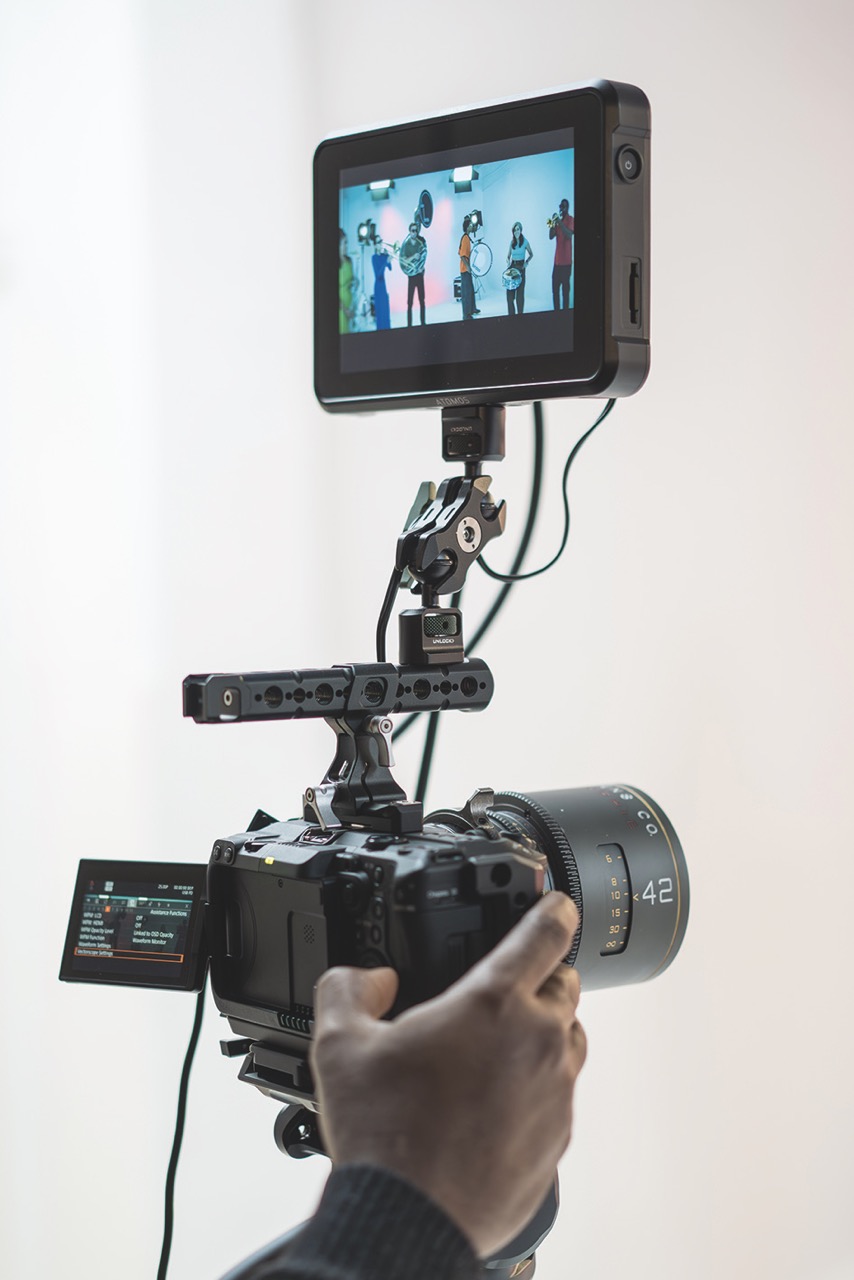
Canon announced this as its first camera to offer open gate recording – a major plus for content creators delivering multiple formats. A simultaneous shooting mode, which records 4K horizontal video to CFexpress while capturing 2K vertical footage to SD, is perfect for social edits.
Dual menus switching between stills and cine interfaces make it a true hybrid. Add pro-grade connections like Canon’s XC Protocol, Frame.io integration, full-size HDMI, dual XLRs and timecode, and this camera is built for serious filmmaking.
The only real omission is IBIS, which you would say gives the FX3 the edge for handheld work, but Canon showed a video highlighting the benefits of in-camera digital stabilisation versus IBIS. It looked convincing, but we’ll wait until we do our own tests to confirm the theory.
There is no doubt the inclusion of internal Raw, waveforms, shutter angle and pro audio makes the C50 a complete filmmaking tool. Add in high-resolution stills performance and it’s a great hybrid. A full test will be coming soon.
This article was first published in the November/December 2025 issue of Pro Moviemaker


